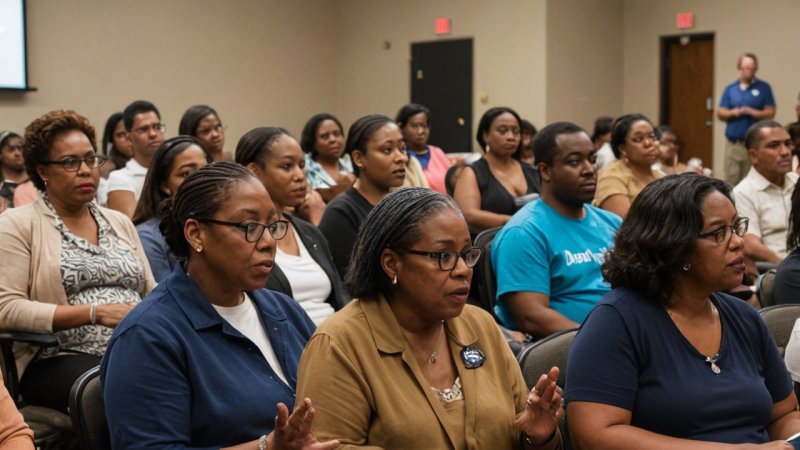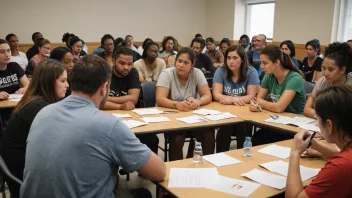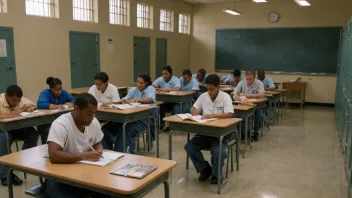Public policy serves as the backbone of community development, shaping the frameworks within which communities thrive or struggle. It influences everything from education to healthcare, from housing to environmental protection, ultimately dictating the quality of life for millions. In an increasingly interconnected world, understanding the nuances of public policy becomes vital for those who wish to engage actively in the betterment of their communities. This article delves into the role public policy plays in community development, examining its implications, challenges, and opportunities for positive change.
The Connection Between Public Policy and Community Development
Public policy encompasses the decisions and actions taken by government bodies that directly affect the lives of citizens. These policies are designed to address societal issues, allocate resources, and promote the general welfare. When effectively crafted, public policy can lead to sustainable community development by providing necessary infrastructure, fostering economic growth, and ensuring equitable access to services.
For instance, policies that promote affordable housing can help alleviate homelessness and provide stability for families. Similarly, education policies that ensure equitable access to quality schooling can break the cycle of poverty, empowering individuals to contribute positively to their communities. Thus, the interdependence of public policy and community development is clear; one cannot thrive without the other.
Health and Wellbeing Initiatives
Health policies are pivotal in shaping community health outcomes. Initiatives that focus on preventive care, mental health services, and access to healthcare can significantly enhance the wellbeing of community members. For example, the implementation of community health centers in underserved areas has proven effective in providing essential healthcare services to low-income populations.
Moreover, public health campaigns that promote healthy lifestyles—such as nutrition education, exercise programs, and mental health awareness—can foster a culture of wellness. By prioritizing health in public policy, communities can reduce healthcare costs, improve productivity, and enhance overall quality of life.
Education and Literacy Policies
Education is a cornerstone of community development. Public policies that support early childhood education, after-school programs, and adult literacy initiatives can create a more educated populace, leading to greater economic opportunities. For instance, policies that fund public schools adequately ensure that all children have access to quality education, regardless of their socioeconomic status.
Additionally, initiatives aimed at adult education and vocational training can equip individuals with the skills needed for the modern workforce. By investing in education, communities can promote social mobility and reduce inequality, thereby fostering a more cohesive and prosperous society.
Poverty Alleviation Strategies
Poverty is a pervasive issue that affects millions of individuals and families worldwide. Public policy plays a crucial role in poverty alleviation through social welfare programs, job training initiatives, and economic development strategies. Programs such as universal basic income, food assistance, and housing vouchers can provide immediate relief for those in need.
Furthermore, policies that stimulate job creation through support for small businesses and infrastructure projects can help lift communities out of poverty. By addressing the root causes of poverty and providing sustainable solutions, public policy can empower individuals to achieve self-sufficiency and contribute to their communities.
Disaster Relief and Resilience Building
Natural disasters can devastate communities, and effective public policy is essential for disaster preparedness and recovery. Policies that focus on building resilient infrastructure, emergency response systems, and community engagement can mitigate the impacts of disasters. For example, urban planning policies that incorporate green spaces and sustainable building practices can enhance a community's ability to withstand climate-related events.
Moreover, public policy can facilitate coordination among various stakeholders—government, non-profits, and community organizations—to ensure a unified response during crises. By prioritizing disaster resilience in public policy, communities can better protect their residents and recover more quickly from setbacks.
Environmental Protection Policies
As communities face increasing threats from climate change, environmental protection policies become paramount. Public policy can promote sustainable practices, such as renewable energy initiatives, waste management programs, and conservation efforts. By implementing policies that prioritize environmental health, communities can ensure a sustainable future for generations to come.
Additionally, community engagement in environmental policy-making can empower residents to advocate for their needs and interests. By fostering a sense of stewardship towards the environment, communities can work together to create healthier and more sustainable living conditions.
Spiritual Support and Community Cohesion
While often overlooked, the role of spiritual support in community development is significant. Public policies that recognize the importance of mental health and spiritual well-being can foster community cohesion and resilience. Initiatives that promote mental health awareness, support groups, and community gatherings can help individuals find solace and connection amidst challenges.
Furthermore, policies that encourage interfaith dialogue and collaboration can strengthen community bonds, fostering a sense of belonging and mutual respect. By addressing the spiritual dimensions of community life, public policy can enhance overall well-being and social cohesion.
How Individuals Can Get Involved
Individuals play a crucial role in shaping public policy and community development. Engaging with local government, attending town hall meetings, and advocating for policies that align with community needs are essential steps towards making a difference. Volunteering with local organizations, participating in community service projects, and supporting grassroots movements can also amplify the impact of public policy initiatives.
Moreover, educating oneself and others about pressing social issues can inspire collective action. By raising awareness and fostering dialogue, individuals can contribute to a more informed and engaged citizenry, ultimately driving positive change in their communities.
Conclusion
Public policy is a powerful tool for community development, influencing various aspects of life from health and education to environmental protection and spiritual well-being. Understanding the intricacies of public policy allows individuals to engage meaningfully in their communities, advocating for change and supporting initiatives that promote social justice and equity. As we navigate the complexities of our interconnected world, it is essential to recognize that each of us has the capacity to contribute to the betterment of our communities through informed action and advocacy.






